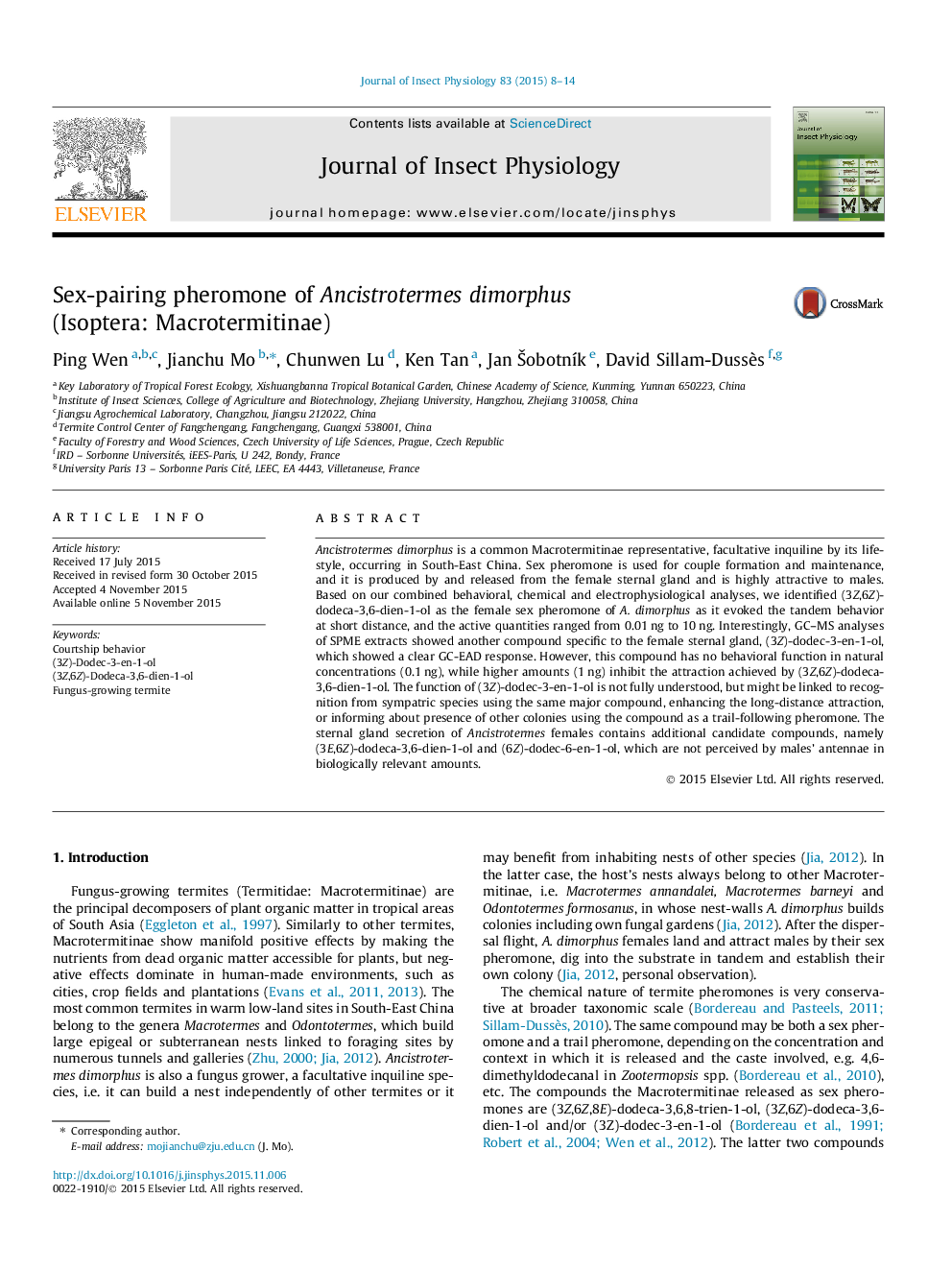| کد مقاله | کد نشریه | سال انتشار | مقاله انگلیسی | نسخه تمام متن |
|---|---|---|---|---|
| 5921421 | 1570987 | 2015 | 7 صفحه PDF | دانلود رایگان |

- The sternal gland of a female Ancistrotermes dimorphus secretes 4 compounds.
- Only (3Z,6Z)-dodeca-3,6-dien-1-ol and (3Z)-dodec-3-en-1-ol are perceived by males.
- (3Z,6Z)-Dodeca-3,6-dien-1-ol is the female sex pheromone.
- (3Z)-Dodec-3-en-1-ol inhibits the short-distance sex attraction to males.
Ancistrotermes dimorphus is a common Macrotermitinae representative, facultative inquiline by its life-style, occurring in South-East China. Sex pheromone is used for couple formation and maintenance, and it is produced by and released from the female sternal gland and is highly attractive to males. Based on our combined behavioral, chemical and electrophysiological analyses, we identified (3Z,6Z)-dodeca-3,6-dien-1-ol as the female sex pheromone of A. dimorphus as it evoked the tandem behavior at short distance, and the active quantities ranged from 0.01Â ng to 10Â ng. Interestingly, GC-MS analyses of SPME extracts showed another compound specific to the female sternal gland, (3Z)-dodec-3-en-1-ol, which showed a clear GC-EAD response. However, this compound has no behavioral function in natural concentrations (0.1Â ng), while higher amounts (1Â ng) inhibit the attraction achieved by (3Z,6Z)-dodeca-3,6-dien-1-ol. The function of (3Z)-dodec-3-en-1-ol is not fully understood, but might be linked to recognition from sympatric species using the same major compound, enhancing the long-distance attraction, or informing about presence of other colonies using the compound as a trail-following pheromone. The sternal gland secretion of Ancistrotermes females contains additional candidate compounds, namely (3E,6Z)-dodeca-3,6-dien-1-ol and (6Z)-dodec-6-en-1-ol, which are not perceived by males' antennae in biologically relevant amounts.
Journal: Journal of Insect Physiology - Volume 83, December 2015, Pages 8-14